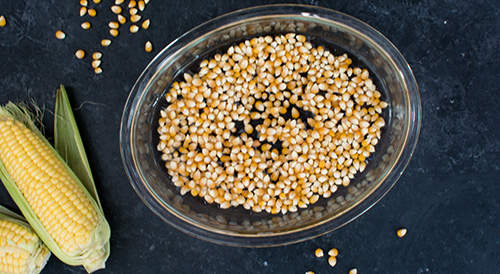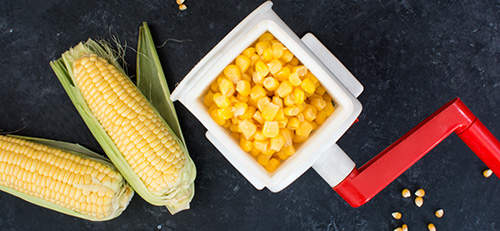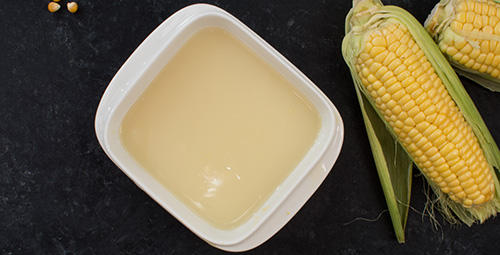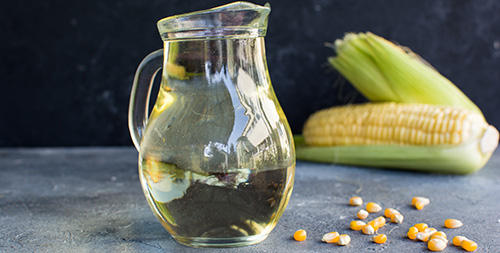Plant oils have been present in human cuisine since the beginning of time. At first, humans probably used animal fat, but they learned how to extract plant oils very soon after that.
Plant oils are triglycerides gained from the plant source, whether a nut tree or plant-like flax or corn. The edible oils have been used in cooking or as a supplement for millennia but also for lighting lamps, skincare, and even oil painting.
Some oils are more common, like sunflower or corn oil, while other oils, such as pecan oil or Brazil nut oil, are less common.
Here are the most popular types of plant oils and their uses:
- Coconut oil: Used for cooking and with medical and industrial applications as well;
- Canola oil: Besides being used in homes for cooking and salads, also used to make biofuel;
- Corn oil: One of the major oils used in cooking or for salads;
- Cottonseed oil: Used for cooking and salads but also in the industry;
- Olive oil: Used in cooking, skincare, and soaps;
- Peanut oil: The oil with a high smoke point commonly used for deep frying and, due to the peanut taste, also used for salads;
- Rapeseed oil: Along with corn oil, one of the most used oils in cooking;
- Sesame oil: Comes in two forms, cold-pressed for salads and dark sesame oil for frying;
- Soybean oil: The oil created as a byproduct of soy meal;
- Sunflower oil: A quite common oil in cooking.
Making Corn Oil
Making corn oil at home may sound hard to pull off, but it is possible to do. The process is slow and you might not get as much oil as corn oil manufacturers do, but one thing is for sure: You will have a 100% natural corn oil, without any additives or chemicals.
Related: How to Make Ginger Oil To Counter Prostate, Ovarian and Colon Cancer
Why Should You Make Your Own Corn Oil?
Corn oil is the most popular type of plant oil due to its beneficial properties. It has a high smoke point, and this makes it ideal for deep frying and longer periods of cooking.
Besides being good for cooking, homemade corn oil may be used in dressing for your favorite salad. Corn oil is 100% fat, containing no proteins or carbs. One tablespoon (15ml) of the corn oil has the following:
- 122 calories
- 14 grams of fat
- 13% RDA of vitamin E
The corn oil can be also used in baking, and feel free to add it to your favorite cake or bread.
What Are the Potential Benefits?
Although not as super healthy as avocado or olive oil, corn oil has some benefits. We already mentioned it has a decent amount of vitamin E. Corn oil is also rich in phytosterols, which are potentially anti-inflammatory. When compared to olive oil, the phytosterols in corn oil are much higher.
Corn oil is high in anti-inflammatory phytosterols and other compounds that may help reduce certain heart disease risk factors, such as LDL (bad) cholesterol and total cholesterol.
Corn Oil Recipe
Preparation time: Several days.
Makes: 1 lb. oil, approx. 4 cups.
Ingredients:
- 11 lb. dry corn;
- Filtered water.
Needed materials:
- Mechanical press;
- Strainer;
- Shallow trays;
- Bucket.
Instructions:
#1. Fill the bucket 1/3 full of water. You will need a very large bucket.
#2. Soak the dry corn in water for 12–24 hours. This will tenderize the corn. #3. Remove corn from water and press using a mechanic press.
#3. Remove corn from water and press using a mechanic press. #4. The key is to turn the corn kernels into a pulp. Press all corn into a clean bucket.
#4. The key is to turn the corn kernels into a pulp. Press all corn into a clean bucket. #5. Once you have collected the slushy pulp, strain it through a strainer.
#5. Once you have collected the slushy pulp, strain it through a strainer.
#6. Collect the clear liquid in a clean bucket.
#7. Cover the liquid with gauze, and let it rest for a few days. It may depend on the quantity, but it will likely take several days for the water to evaporate.
#8. After several days, you will see a yellow residue—your corn oil. #9. Collect it in glass bottles or jars, and store in a dark place.
#9. Collect it in glass bottles or jars, and store in a dark place.
NOTE: To speed up the evaporation process, collect the corn pulp in large, shallow trays, like cookie sheets. The bigger the surface, the quicker the evaporation.
You may also like:
 How To Make Tea Tree Oil To Treat Infections
How To Make Tea Tree Oil To Treat Infections
Don’t Throw Away Onion Skins, Do This Instead! (Video)
8 Ways to Use Your Rancid Oil for Survival
How To Make Antiseptic Sugardine To Treat Wounds And Inflammation






















can one use pop corn and just soak it for a time and then do the process? If it can be done then pop corn can be stored or even dry canned for future use.
This is the first time seeing your article! Could be I have just overlooked it but I am glad that I found it..you have some very important information on here..thank you
Is this field corn or sweet corn from the garden
Mary,
Any corn should work; but, field corn or dent corn contains a bit more oil and less sugar.
Dent corn contains about 4% oil and sweet corn a bit less than 3% oil.
Canola oil is made from Rapeseeds.
HuffPost/life has an interesting article on Canola oil. Canola is a trademarked name. It is an invention of some Canadian scientists. They modified the original plant that generated rape oil so that it no longer contained the acids that caused the FDA to ban rape seed oil in the U.S. in 1956.
According to Wiki and HuffPost, the formulation of Canola is pretty exact. I am not sure, even if one had an extensive field of the exact plant needed for Canola that one could process the seeds to get the product that is Canola.
If you are interested in history of Canola, I would recommend the HuffPost/life article. I generally don’t put much stock in HuffPost “news” as it most generally is editorializing rather than pure news. That Life category has some interesting articles in it that are along the line of the articles here, dealing with foodstuffs.
Modern varieties of canola have high oil percentages. When we’ve grown it we averaged between 48-52% oil content. People have “drowned” in silos of canola because it’s so slippery, they just sink to the bottom and suffocate. With such high oil content, a little pressure and heat will extract a good bit of oil from the seed.
Personally I don’t like it. We grow it but I won’t use it for cooking except in a dire emergency and I have olive trees for then. Just got to organise a press. As Graywolf says canola is good for greasing machinery, maybe.
Sunflower oil is light and has a great, mild flavor. Plus the seeds are a great protein source, and if you haven’t tried sunflower butter it’s fabulous!
Graywolf12,
Actually the terms Canola & Rapeseed are regional; but, Canola is a specific formulation used for food, where the original rapeseed is more acidic.
Rapeseed oil has a high flash point and is used for coating metals for preservation and was used fir lubricating steam engines.
This is an interesting article about making corn oil. Follow up articles about how to make olive oil, sunflower oil, cottonseed oil, avocado oil and walnut oil would be of interest to those of us on the left coast as those are all products that are cash crops here.
This is an interesting article. While I can’t attest to its accuracy, it does repeat information contained in other on-line articles:
“Have you ever wondered whether Canola is the same as Rapeseed Oil? In the UK, the answer is yes.
Rapeseed oil is the name given to oil produced from the seeds of the oilseed rape crop, which is a member of the Brassica family that also includes cabbages and turnips.
The oil largely has two uses — consumption and industrial (e.g. bio-degradable lubricant, bio diesel and plastics). For both uses, visually, the crops and their seeds are fairly identical. However, different varieties are used for each, with different properties.
Culinary rapeseed oil comes from seeds with low levels of compounds identified as potentially unpalatable and unsuitable for consumption in high concentrations.
The name ‘Canola’ was registered in 1979 in Canada and refers to this edible oil crop, developed back then using breeding techniques, and characterized by low erucic acid (less than 2%) rapeseed (LEAR), and low levels of glucosinolates. Some say the name stands for Can(ada) + o(il) + l(ow) + a(cid).
Erucic acid is naturally found in some oils. Findings from animal and laboratory studies suggest that regular consumption of high levels of erucic acid may be a risk to heart health. Evidence from human studies is less clear but suggests that this fatty acid is less of a concern in humans. Nevertheless, it’s still considered undesirable to produce an oil containing too much. Glucosinolates are natural components found in some plants that can be toxic and unpalatable in high concentrations.
High erucic acid rapeseed (HEAR) on the other hand, is useful for industrial use, and is valued for its high heat stability properties.
In some countries, the term ‘rapeseed oil’ is used to refer to the oil for industrial use, whereas ‘Canola oil’ is used to refer to the edible cooking oil. However, in the UK, ‘rapeseed oil’ is usually used interchangeably for both and the term ‘Canola oil’ is not really used at all.”
This is probably the most accurate explanation I’ve heard in a long time re canola. We grow it so we researched it extensively before hand.
It was originally the result of selective breeding but there is a lot of GM now. We only grow OP varieties.
Personally I won’t use it. Don’t like the taste much and it gets a lot of bad press for various health reasons
But oil wise our crops regularly get over 50% oil content which would be a much better return on your time than 4% for corn.
Olive oil is still my choice though. The trees are growing and just have to figure out an easier way than a mallet and a flat rock ?
Ginny: The local olive producer whose main product is olive oil uses a centrifuge to extract the oil from the olives. Sorry I didn’t pay more attention to his lecture on extracting olive oil. I do know he had two large stone mill stones that were formerly used to produce olive oil. Given the cost of labor today, I think a centrifuge would probably be cheaper than two three foot in diameter mill stones. Plus you need the oxen to drive them etc etc. I realize this probably isn’t much help, but maybe it will head you in the right direction. Amazon might even sell mill stones although probably not eligible for Prime delivery.
There is a processing plant near me; just thinking about hard times or worse case scenario, no power etc. There are a few YT vids that show primitive ways. A flat surface and a rock doesn’t thrill me but it might come to that and we’ll be glad we have something.
Apologies, I should have said Ohio Prepper rather than Graywolf. It’s so confusing replying on the phone where everything is so tiny
The only dry corn options I have seen are popcorn and deer corn. Can both be used for this? I’m not sure if deer corn has been treated in any way that would prevent its use for grinding into meal or using to make oil. Thanks for all your info!
The corn you show in the pictures is very immature. It isn’t even dented. Is this necessary for the procedure? Can mature field corn be used? It would seem to me that mature kernels would yield the most oil since that is what the large manufacturing process uses.
This is a pretty good article, Anela. A lot of good info. I’m not quite sure why you only focused on corn but I guess a good a place to start as any. While I was reading through your article I didn’t see anything about cooking/heating the corn to extract the most amount of oil out of it. About the only “seed” that is cold-pressed these days is the olive to extract its oil. Most other seeds are heated enough to maximize oil extraction. Modern oil mills extract oil using a combination of pressing, cooking and solvent extraction. So why not copy their methods, albeit on a smaller scale, to extract oil from let’s say, sunflower seeds? Sunflower oil one of the best oils out there. Nuke and crush. The result is sunflower oil. I’m sure this would work just as well with most other seeds and nuts.
Canola oil tastes terrible. Corn oil? Use an unfiltered cold pressed corn oil when baking whole and multi-grain breads, it gives such a rich buttery flavor, especially if your sweeteners are honey and molasses. Didn’t know it was so easy to extract, very cool.
Interesting article. How much oil can be pressed from 11lbs of corn? Does it need to be refrigerated? What to do with the leftover corn… animal feed or people food and what do you do with it? Other resources that you would recommend for further information?
Thanks?
Miss Kitty,
That would depend on the type of corn. As I mentioned above, Dent corn contains about 4% oil and sweet corn a bit less than 3% oil and there are some specialty corns containing more oil.
A medium ear of dent corn has about 4.74 grams of fat, most of which are contained in the germ, the innermost part of the kernel. A medium ear of sweet corn has about 1.06 grams of fat. A 56-pound bushel yields 1.6 pounds, or about 700 milliliters (23.7 fluid oz), of oil so your 11 lbs would yield about 138 ml or about 4 ½ fluid oz.
All vegetable oils need to be refrigerated, unless they can be chilled and then vacuum or nitrogen packed. Oxygen and heat will make oil turn rancid, so removing one or more of those elements helps preserve the oil.
It’s just corn at that point, mostly starch and fiber from the hull. It can be fed to animals or people or converted to ethanol by adding Alpha amylase and yeast. The ethanol would then require distillation.
Amazing plant, corn. Get oil from the grain, then you can make booze from the leavings, eat it yourself or feed it to the chickens. I think I read that the stems and shucks can be used for livestock feed as well? Shucks are used for stuffing mattresses and wrapping food. Cobs can be used to make more feed, (I think), in the outhouse or to make tobacco pipes. What other uses are there that I missed?
Miss Kitty,
Yep, after converting them to silage, or preservation by acidification, through fermentation. Silage can be fed to cattle, sheep and other ruminants.
We have a silo on the property, and corn stocks used to be chopped and blown into it to ferment; but, now equipment is available to tightly wrap (air tight) bales that allow then to ferment; but, provide easier access for transport use.
The outhouse is either a myth, or something used by pioneers 150-200 years ago, since all of the outhouses I’ve used had TP.
Cobs once properly dried, also burn quite well for heat.
Miss Kitty,
Did you really mean Amaizeing plant?
Just wondering, LOL.
Miss Kitty, I’m not positive of the exact details but I saw a historical TV program that said corn flakes (cereal) was “discovered” by a worker that was burning the leftover mush from corn oil extraction and noticed some of the mush that dripped onto the outer edges of the incineration area had toasted up and looked and smelled like it might taste good, so out of curiosity he tried some and then went on to promote it as a food product, and eventually became marketed as Corn Flakes (maybe Kellogg’s?).
I would also like to see articles on how to extract sunflower oil, olive oil, cottonseed oil, grape seed oil, walnut oil and avocado oil, all cash crop products that grow in abundance in the PDRK.
Having toured an olive orchard here locally and having gotten the history of the orchard and the way they presently extract olive oil, I know the modern way, but it is high-tech using a centrifuge. I am more interested in how olive oil was extracted in, say, medieval Greece, Spain or Italy.
While perusing the internet about canola I ran across an article that suggested adding olive pits to your olive oil to give it a mellower flavor. It also contained the caveat that one should make small batches as adding olive pits to olive oil could speed up spoilage of the oil. They recommended only making a week’s worth of olive oil at at time and refrigerating it. No personal comment on the process, just passing the info along. I will say that I don’t intend to try it. I can live with my olive oil just the way it is. I am too plebeian to be able to detect a difference unless I am tasting them one right after another. That is another affectation here on the left coast. We are past wine tasting. The upper crust is now into olive oil tastings. Well, la de da.
Interesting article. Does it need to be refrigerated? What to do with the leftover corn… animal feed or people food and what do you do with it? Other resources that you would recommend for further information?
Thanks?
I think that you have canola and rapeseed mixed up. Rapeseed has a bitter taste and is NOT used in cooking. However, it is used to make biodiesel. Canola is the oil that has the bitter taste removed (by old fashioned genetic selection, not genetically modification). It is usually too expensive to use for biodiesel.
Bob: If your comment is directed at my post, I think the problem lies in the fact that the article I posted said that high glucosinolates are unpalatable. It would have helped if they just said they tasted yukky.
Eurucic acid gives white rats heart attacks. Just to CTAs, the FDA disapproved oils with high eurucic acid (learned something new with this article. Never heard of eurucic acid before I started to research Canola) back in, one article said, 1956. Who knew? Now that I have learned that esoteric bit of information, I hope it is the million dollars question some day. Unfortunately, I am not sure how to pronounce “Eurucic.” and Predictive redlines it every time I type it, so apparently it is beyond the scope of Predictive’s
vocabulary also. Apparently it is beyond my computer’s dictionary too so I guess I will have to remain ignorant of its pronunciation. Gee, I hope it doesn’t come up much in conversations after this. I am going to feel really dumb.
Bottom line: we learned a lot more about Canola than most of us really cared to know. I’ll bet I am now at least the neighborhood guru on the composition of Canola and its difference from rapeseed oil and the value rapeseed oil has for the metals industry.
Well, having nothing more pressing to do at the moment, I went on line to see if I could find anything about making olive oil at home. Wow! what a plethora of information is available on line. I would try to condense it in a short paragraph, but it needs a whole article all to itself. If you are interested, the international bazaar, Amazon, has a whole line of oil presses available. And if you really want to make your own olive oil, just ask the internet and you will get a library full of information about making olive oil at home.
I did learn that oil pressed from green olives has a longer shelf life than oil pressed from ripe olives. You can learn something new every day if you are not careful.
If you think that is something you will be doing after the end of the world, now is the time to start preparing for it.
left coast chuck,
Nothing more pressing to do? Humor @ its punyest.
While the PDRK has its challenges, you do have the advantage of being able to grow olives, something we lack here.
I don’t consider a day complete unless I’ve packed away something I didn’t already know.
I don’t plan on it; but, since one never knows, it could be something to consider. Here I suspect we would be using corn, soy and sunflower.
Continuing my exploration of producing oil at home, I copied this from the Piteba website. Piteba is a Dutch company that makes a home hand press for producing oil. First a disclaimer: I know nothing about this company and have no financial interest in them, but I did find their website very interesting and I intend to explore it more.
Now for the information from their site. I think it will answer many questions folks had, including what to do with the cake and how much oil can be produced. I might add that Piteba includes an oil lamp for heating the mix as you are extracting the juice.
“Fill the bottle with lamp oil (paraffin oil) and secure it with the rubber band under the press. Now turn on the small burner and wait about 10 minutes. The press is warm now, so more oil will be produced. It remains cold pressed oil (oil temperature below 40 ° C). If you think the oil gets too warm, use a slightly smaller flame. Above 25 ° C (tropical conditions), the burner usually does not need to be used.
Press cake
There are all kinds of applications for the press cake. For example, the peanut or walnut press cake is edible after roasting. Other nuts and seeds can be used as animal feed or compost.
HOW MUCH OIL WILL YOU MAKE
FROM 1 KILO
YOU PRESS APP.
Almond: Prunus dulcis 0,6 liter
Argan: Argania spinosa L. 0,5 liter
Babassu :Orbignya phalerata 0,7 liter
Beachnut:Fagus sylvatica 0,3 liter
Cocoa beans: Theobroma cacao 0,5 liter
Chia seed: Salvia hispanica 0,3 liter
Coconut (coprah) Cocos nucifera 0,7 liter
Hazelnut: Corylus avellana 0,6 liter
Hemp seed: Cannabis sativa subsp. sativa 0,3 liter
Jatropha (decorticated): Jatropha curcas 0,8 liter
Jatropha (undecorticated): Jatropha curcas 0,4 liter
Rape seed/Canola: Brassica napus 0,4 liter
Lin seed / flax seed: Linum usitatissimum 0,4 liter
Moringa(undecorticated): Moringa oleifera 0,2 liter
Niger seed: Guizotia abyssinica 0,4 liter
Palm oil kernel: Elaeis guineensis 0,5 liter
Peanut / groundnut: Arachis hypogaea 0,5 liter
Perilla: Perilla frutescens 0,3 liter
Pistachio: Pistacia vera 0,4 liter
Pumpkin seed: Cucurbita sp 0,4 liter
Safflower: Carthamus tinctorius 0,2 liter
Sesame seed (sim sim): Sesamum indicum 0,5 liter
Soy bean: Glycine max 0,1 liter
Tea tree seed: Camellia oleifera 0,3 liter
Sunflower seed (black oil seed): Helianthus annuus
0,4 liter
Sunflower seed ( striped, low in oil): Helianthus annuus
0 liter
Walnut: Juglans sp 0,7 liter
OLIVE OIL
(in one step)
Press your own olive oil
Which olives
From a number of olive varieties you can even produce oil in one step. Unfortunately, Piteba cannot give you any assurance about olive breeds that are suitable for this purpose. You will have to try your own olives to find out if your olives are suitable for the one step method or if you must first produce olive paste and press the oil with a fruit press. It seems that olives with a large kernel and little flesh give best results. These are the old varieties and wild olives.
How to proceed
Use fresh fully ripened oil olives. Fill the press with olives (including kernel) and push them into the press with the pestle while turning the crank. The olives should be around 25 – 30 ° C and use the burner for some extra heat.
The press cake comes out of the cap and the oil comes out of the oil slit. With the adjustment bolt, the pressure can be controlled. After settling, you have a clear cold-pressed olive oil.
I have never heard of some of the seeds they describe, but I have included all on their list as some readers may recognize the seed. Hope some find this information helpful.
CAUTION!!
I don’t understand why they included Jatropa in their list..
Jatropha (decorticated): Jatropha curcas 0,8 liter
Jatropha (undecorticated): Jatropha curcas 0,4 liter
as it is very toxic.
———–
Toxicity
For an unbiased analysis of the oil of jatropha, it is essential to be fully aware of its negative effects. Although the plant itself contains many toxic compounds, we shall focus only on those that are present in the oil.
The phorbol esters have been recorded to promote tumors, although not directly. The Curcin present in the oil affects the ribosomes of our cells. Basic biology tells us that ribosomes are a functional unit of each of our body’s cells and they are involved in the task of making proteins for the body. [6]
There have been some instances where people who have drunk very small quantity of jatropha oil had to suffer powerful vomiting and even diarrhea.
Jatropha OilThe plant does have medicinal value but I wouldn’t press Jatropha oil in a press that I used for edible oil.
For this of us who don’t have decorticated in our every day vocabulary, like me, for instance, this is courtesy of my on-board dictionary:
“decorticate | dēˈkôrdəˌkāt |
verb [with object]
1 technical (often as adjective decorticated) remove the bark, rind, or husk from: decorticated peanuts.
2 subject to surgical decortication.
adjective Biology & Psychology
relating to an animal that has had the cortex of the brain removed or separated.
ORIGIN
early 17th century: from Latin decorticat- ‘stripped of its bark’, from the verb decorticare, from de- (expressing removal) + cortex, cortic- ‘bark’.”
That is a couple of things I have learned today. I am afraid I am going to blow out my memory bank. They told me when I was fabricated that 64K of memory was all I would ever need. Why it was almost a complete volume of Encyclopedia Britannica. Because I am such an old model, I can’t be upgraded. They don’t make parts like mine any more.
LCC: Thanks for looking up all that info. I’ve planted lots of eating and oil olives, most are universal in that respect though purely eating varieties are usually less suitable for oil.
I’ve looked at a small processing plant but they start at around 27k, well out of my price rang LOL Looking at the primitive processing a press could be fashioned from a heavy duty hydraulic jack and frame but crushing the olive and stone is always a stumbling block. Hence my reference to a hammer and flat rock which was apparently how poor people did it if they couldn’t afford the rolling stone and ass ?
Ginny: The Piteba website talks about crushing the olives with the stone. The resulting ground up mix less the oil is called pomace, I think. It seemed to suggest that yielded more oil although it didn’t come flat out and say that.
Unless your intention is to go commercial and it sounds as if that is what you are contemplating, Amazon has a very large selection of non-commercial electric oil presses as well as strictly mechanical.
If you are going to planning to offer olive oil commercially, Corning, CA is a center for olive oil production in CA. There are three olive oil companies listed there. Corning is a wide spot on I-5 just south of Red Bluff. The one facility I have been to is quite large and has a large store selling all kinds of olive products, including products made of olive wood which are quite attractive. If you are going to sell commercially, it might be worthwhile to take a trip to Corning and see what they are doing. Folks there might even be willing to give you a tour of their facility and offer suggestions and mention pitfalls to avoid. Sometimes that happens. Sometimes not also.
If you are getting into commercially producing olive oil, good luck in your venture.
where can you get a press like he shows in the photos?
So, do you have to pit olives before pressing them, or do the seeds hold oil too?
If you were using a light weight press like the one shown in the article, yes I would pit the olive. The stone is very hard and would break anything plastic or cast alloy.
Commercial modern centrifuge machines process the whole fruit as did the old fashioned two or three granite stones rolling around in the depression driven by hand or animal that produced the paste which was then spread on mats and pressed in a stack to extract the oil. The kernel contains quite a bit of oil but it may not be that easy to extract with primitive means.
Here’s a link to an article about extracting sunflower oil.
https://www.instructables.com/Grow-Your-Own-Cooking-Oil/
I’m sure you can find more information about the how to either on Instructables or other sites.
For best results, Piteba recommends that nuts and seeds have a moisture content of 10%. Get the How To… HERE